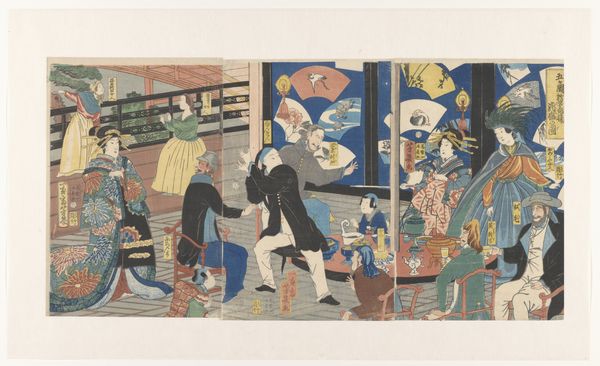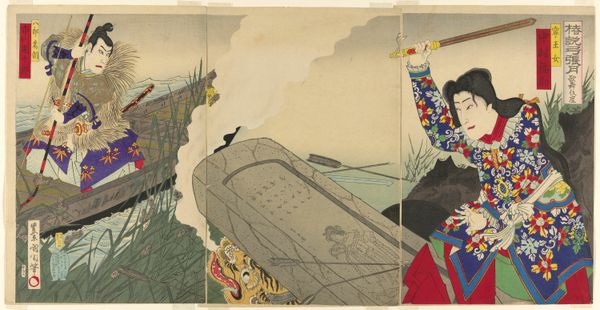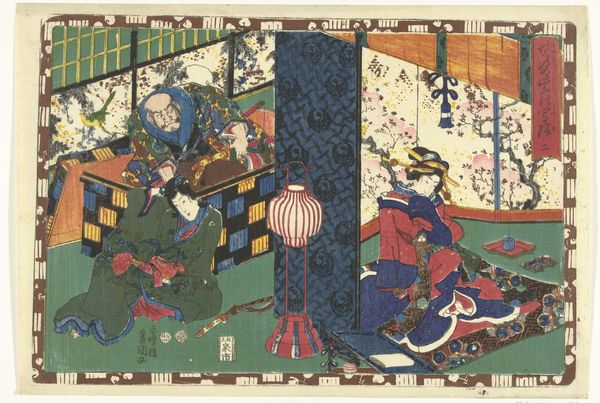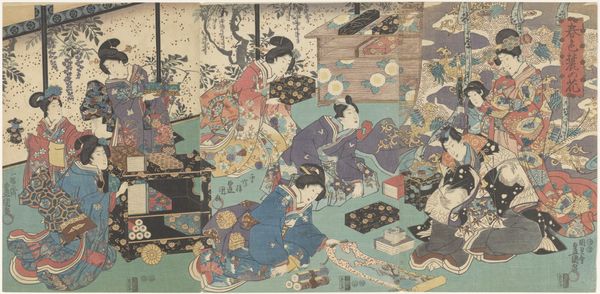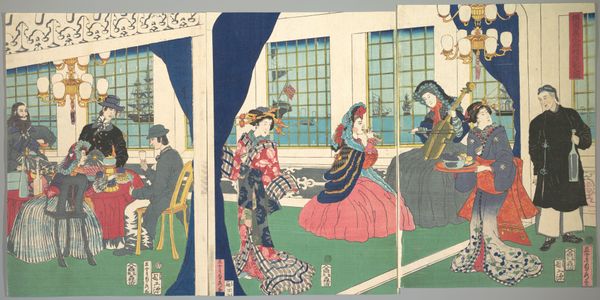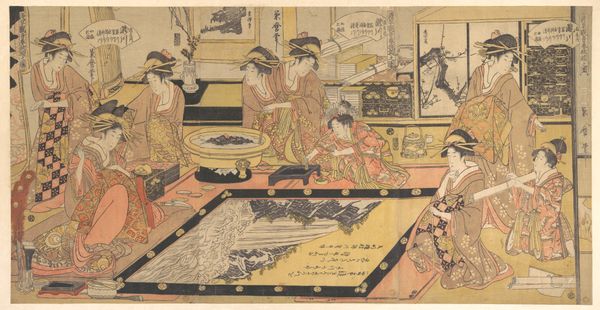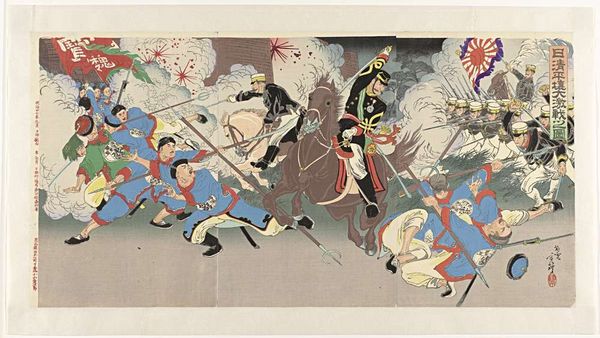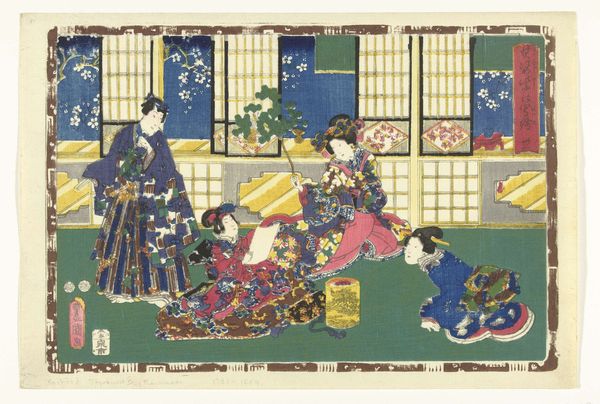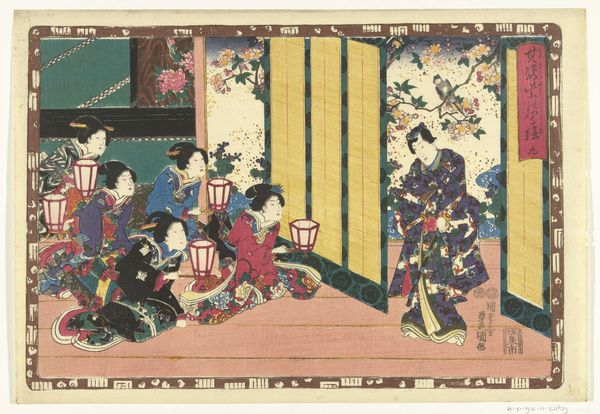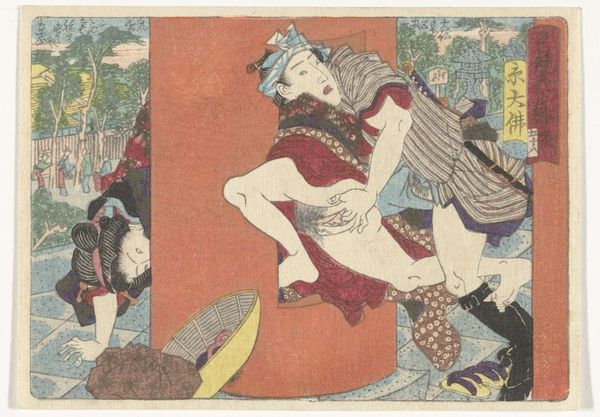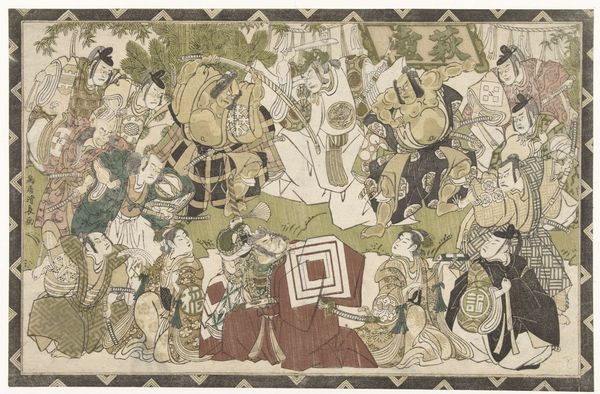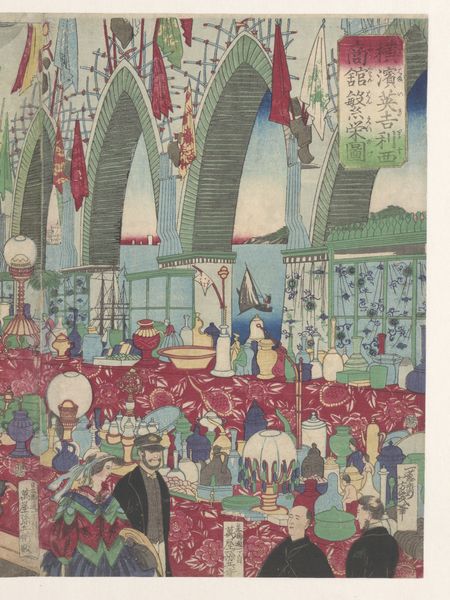
Dimensions: height 359 mm, width 720 mm
Copyright: Rijks Museum: Open Domain
Utagawa Yoshiiku made this color woodblock print, entitled "The Seven Gods of Good Fortune Cultivating Silkworms", in nineteenth-century Japan. The print presents an idealized vision of silk production, intertwining labor with divine favor. The print reflects a moment of significant social and economic transformation in Japan, as the country opened to international trade. Silk, a valuable commodity, played a crucial role in this new economic landscape. Here, we see women engaged in the meticulous work of raising silkworms, essential to silk production, while the Seven Gods of Good Fortune preside over the scene. This suggests a harmonious relationship between labor, spirituality, and economic prosperity. The presence of these deities elevates the mundane task of sericulture to a sacred act, imbuing it with cultural and religious significance. Historical sources, such as trade records and religious texts, can help us understand the complex interplay between commerce, labor, and belief systems during this period. By examining the print in its social and historical context, we can gain insights into the values and aspirations of nineteenth-century Japanese society.
Comments
No comments
Be the first to comment and join the conversation on the ultimate creative platform.
